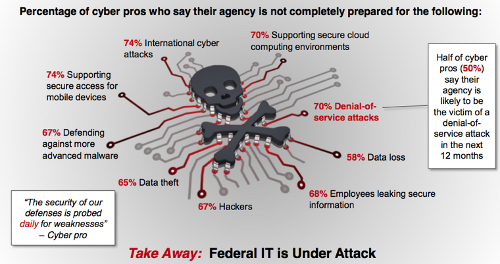“As the world is increasingly interconnected, everyone shares the responsibility of securing cyberspace.”
– Newton Lee, Counterterrorism and Cybersecurity: Total Information Awareness
As we strive to stay connected to people around the world, we’re left to deal with risks inherent to such global connectivity. The risk is present for everyone, be it a single user, or for organizations that deal with sensitive information, financial transactions, and customer data. Because, there are large amounts of private and proprietary data at stake, organizations have to worry about how that data loss or leakage can have a tremendous financial impact. The fact that this space is growing for the long run adds to that challenge.
Top Cybersecurity Strategies for 2020
Fortunately, there are methods to mitigate these risks; the best way to stay ahead of such threats is to put together a sound cybersecurity strategy. Here are the top strategies to stay cyber safe in 2020:

An Effective Antivirus
A good antivirus software prevents frequent attacks and helps organizations move towards a secure environment. A good antivirus will protect against:
- Viruses
- Trojans
- Ransomware
- Worms
- Spyware
Review these factors when choosing an antivirus that meets your organizations cybersecurity requirements:
- Detection rates
- System impact
- Usability
- Support
- Privacy policy
Newly purchased devices may have antivirus software preloaded; otherwise, if picking the right one is still difficult, free trial versions are readily available.
Set up a Guest Wi-Fi
An excellent cybersecurity strategy is providing user with “Guest” Wi-Fi access ensuring WPA2 security. This reduces the risk of malware spreading if a user’s infected device is connected to the Wi-Fi. It also serves to limit information users can view and access.
IoT and Cloud Protection
With the advent of IoT (Internet of Things) devices, an attacker gaining access over a single device could easily compromise the security of the entire network. Some of the most common devices at risk are:
- Smart locks
- Intelligent lighting systems
- Gaming consoles
As more data storage and IoT devices link to the cloud, it’s only a matter of time before data breaches occur. Ensure your IoT devices and Cloud platform are secured with passwords, multi-factor authentication, encryption, and access controls.
Constant Patches and Updates
Because cybercriminals are getting faster at exploiting weaknesses, ensure the latest patches and updates are consistently applied on your devices to reduce the number of vulnerabilities. This prevents attackers from taking advantage of flaws or loopholes in previous software and firmware versions.
Check for compliance
A reliable and actionable protocol for cybersecurity is only foolproof if those implementing it are certain that it follows all regulations and standards. Make sure all stakeholders are aware of the latest regulatory requirements, such as GDPR (General Data Protection Regulation), while continuously monitoring for compliance. Keeping sensitive data safe is possible only when the mandates for such protection are known. Please visit FortifID and get to learn more about personal data protection rights.
Cyber Crime is on the Rise
Cybercrime is progressing at an alarming rate, now more than ever. Attackers are getting smarter, and the losses are higher now than they were in the past. Reports from Cisco have made it clear that “thirty-one percent of organizations have at some point encountered cyber-attacks on their operations technology.” Even worse, the National Cyber Security Alliance has revealed that a staggering 50% of small businesses have faced cyber-attacks. To enhance data security in your business, it would be best if you consult an expert like PacGenesis.

Because organizations highly vulnerable to the ever-evolving nature of cybercrime, they must adopt of a first line of defense. However, it is important to understand that while these steps are necessary, there’s more to organizational cybersecurity than what’s been mentioned; it involves a highly sophisticated effort to identify and plug vulnerabilities based upon a security risk management plan. For more advanced security preparedness, organizations should consult a security expert to devise effective security protocols that keep risks in check.